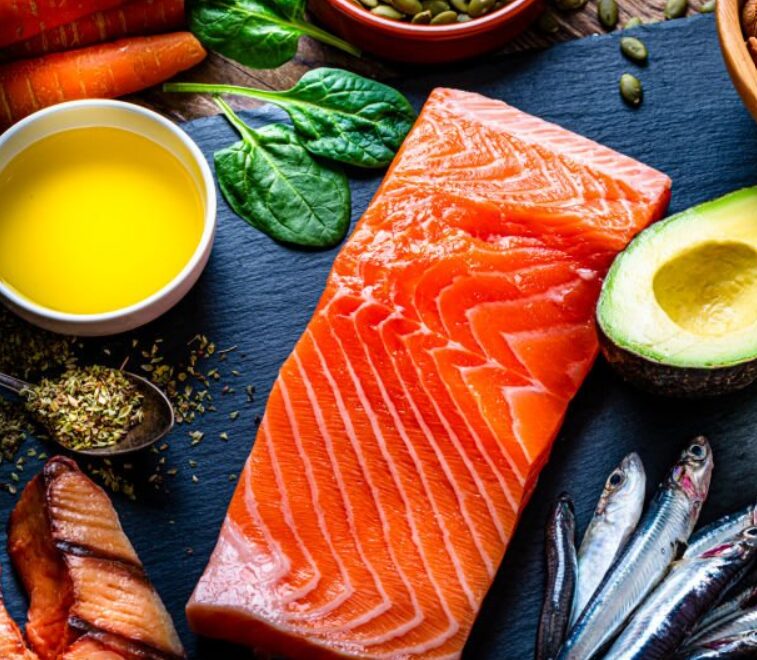We all know it’s important for children to eat at least five portions of fruit and vegetables every day to support their growing bodies and minds. However, the role of omega-3 fats, equally crucial for healthy development, often doesn’t get enough attention.
Omega-3 fatty acids are essential fats our bodies can’t produce naturally, so we must include them in our diet. There are three main types of omega-3:
- Alpha-linolenic acid (ALA) – found in plant-based foods such as flaxseeds, chia seeds, walnuts, soybeans, kale, spinach, and Brussels sprouts.
- Eicosapentaenoic acid (EPA) – mainly found in oily fish like salmon, mackerel, sardines, and trout.
- Docosahexaenoic acid (DHA) – also primarily found in oily fish.
All omega-3 fats offer health benefits, but DHA is particularly important for children’s development. DHA is vital for brain health, accounting for approximately 15-20% of our brain’s fat. It helps maintain normal brain functions, supports the creation of new brain cells, aids communication between brain cells, and contributes to neurotransmitter release.
Regular consumption of omega-3 can also support healthy eye development and provide protection against inflammation and stress. Research shows that sufficient omega-3 intake in early childhood supports cognitive functions like memory, attention, and even emotional control.
Are children getting enough omega-3?
Recent studies suggest many children in the UK aren’t getting adequate amounts of omega-3, especially EPA and DHA. Research indicates that the average seven-year-old consumes less than half the recommended omega-3 intake. Many factors contribute to this shortfall, including children not regularly eating oily fish and parents’ concerns about microplastics in seafood or the higher costs involved.
To overcome these barriers, families can consider budget-friendly options like frozen, tinned, or less expensive fish like mackerel and sardines, which also provide added calcium benefits from small edible bones. Children often reject fish initially due to its strong taste or distinctive texture, especially during the typical fussy eating phases. It can take multiple attempts (up to 8-15 times…!) for a child to become comfortable eating fish. Serving fish regularly both at home and nursery can help children gradually accept and enjoy it.
Alternatives and supplementation
While plant-based omega-3 (ALA) can convert to DHA, this process isn’t very efficient. Therefore, for children who can’t or won’t eat fish due to allergies, dietary choices (vegetarian/vegan), or personal preferences, DHA supplements derived from algae or fish oils (not cod liver oil) may be beneficial. A recommended daily dosage for two- to four-year-olds is approximately 100-150mg of DHA.
Practical tips for including omega-3
Introducing omega-3-rich foods creatively can increase their appeal to children. Consider options such as fish pies, fish pizzas, or mixing salmon into a yogurt-based spread for toast. Incorporating these regularly and in varied dishes can make it easier for children to accept and enjoy omega-3-rich foods.
It’s good practice for nurseries to offer oily fish at least once a week, ideally complemented by another portion at home. Other omega-3 fortified foods include certain eggs, milk, bread, and spreads, or adding seaweed (nori) as a fish-free alternative.
Omega-3 and Special Educational Needs
Emerging studies have explored omega-3’s potential benefits for children with ADHD or autism, with some showing modest improvements in attention, hyperactivity, and social skills. However, the evidence remains mixed, so these findings should be treated with caution.
Ultimately, incorporating omega-3-rich foods regularly into children’s diets supports their healthy development, contributing significantly to their overall growth, learning, and wellbeing.



